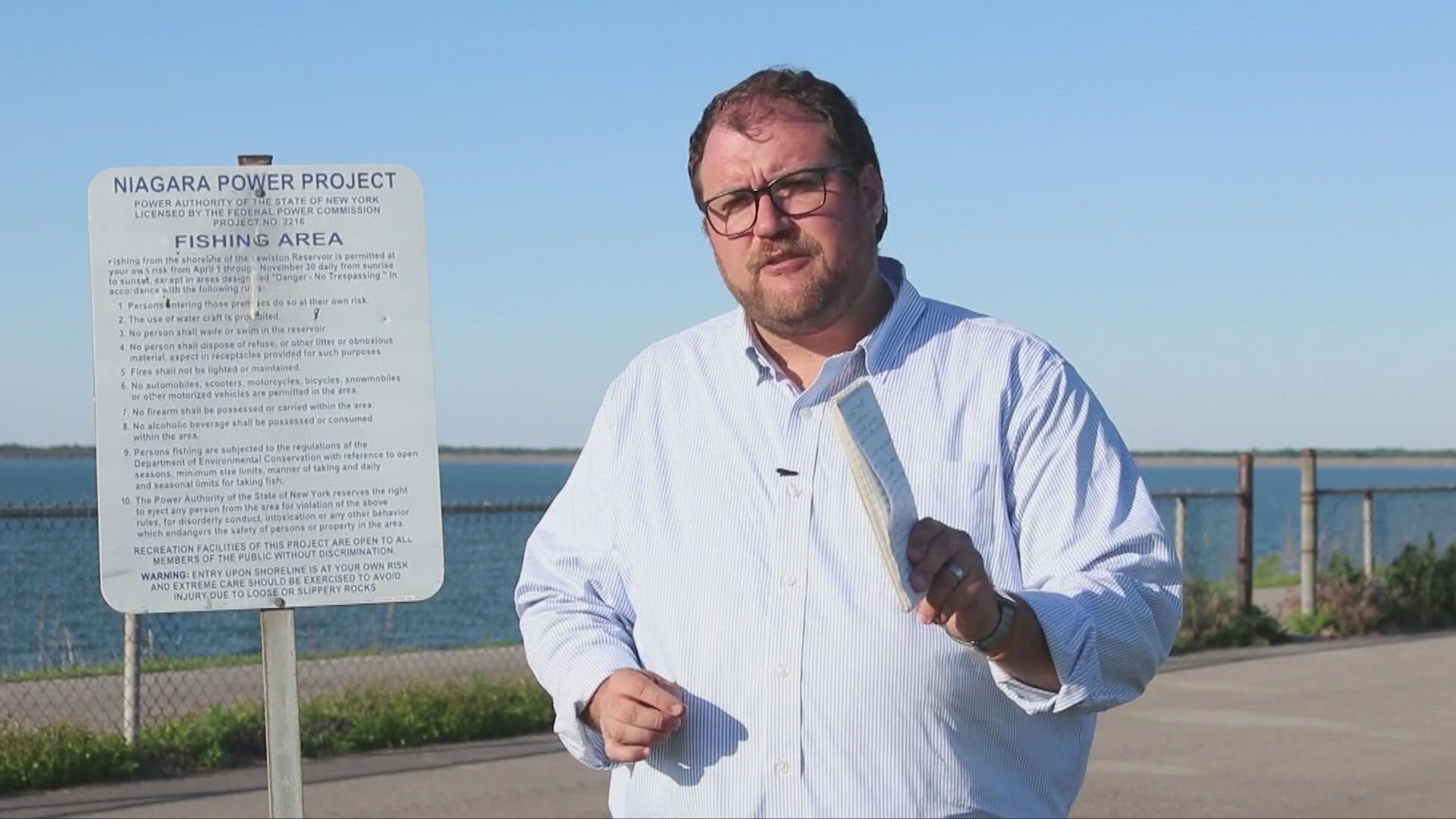BUFFALO, N.Y. — The New York State Department of Environmental Conservation is in charge of keeping an eye on the 1,917 dams across the state.
Here in the eight counties of Western New York, there are 177 dams, 29 of which are classified as a high hazard.
The NYS DEC is quick to point out that there are no dams deemed unsafe, but high-hazard dams receive more attention from inspectors.
"Those dams that are a high hazard or if they failed, would cause catastrophic damage to life and property in the state," said Sean Mahar, executive deputy commissioner at the DEC. "Those are prioritized for more regular inspections."
According to data compiled from the U.S. Army Corps of Engineers' national inventory of databases, the most recent inspection of a high-hazard dam in Western New York was December 11, 2020.
"This is our way of effectively managing our Dam Safety Program for the state making sure that we're prioritizing those that really need annual inspections," Mahar said.
However, a closer look at the data for dams in all 8 counties of WNY reveals that 12 high-hazard dams have not been inspected since 2019.
Furthermore, the condition assessment for 144 dams, out of 172 in WNY, is missing. A dam is given a condition assessment after an inspection. An assessment of Satisfactory, Fair, Poor, or Unsafe is determined by an onsite inspection and an analysis of technical data.
The DEC says they're aware of the missing information.
"The rating system is something that we've brought online as we've continued to evolve our program," Mahar said. "Some dams may have been inspected, they just haven't been updated in the system."
But it's the condition assessment data that emergency response coordinators rely on.
"A lot of emergency services is planning for the events that may happen," said Noel Guttman, director of emergency services for Chautauqua County. "So the more information we have to do that, the better off everyone will be."
Chautauqua County is home to 24 dams, 5 of which are classified as high-hazard. As for the conditions of those high-hazard dams, 2 are not rated, 2 are fair and one is rated as poor, the Conewango Commission Site #33 dam. That dam is a 57-foot earth dam, completed in 1957 and was last inspected in November 2020.
The DEC says just because a dam is rated as poor, doesn't mean it's a critical risk of failure. It could simply be a paperwork issue.
"Sometimes the deficiencies we find are not in the dam infrastructure itself," Mahar said. "It may be they failed to keep a specific record up to date, and we will dock them for that."
The majority of the dams in New York State are privately owned, the DEC merely steps in to inspect them.
For Guttman, it's the unknowns between inspections that concern him from an emergency preparedness standpoint. A dam that is classified as a significant or low hazard has a longer time between inspections, anywhere between 3 to 10 years.
But seasonal changes, severe weather, and unaccounted-for changes to the landscape also impact high-hazard dams.
Recently the Chautauqua County dive team had to remove debris from the Villenova Dam, one of the high-hazard dams in the county.
"Debris had drifted in from the field surrounding it," Guttman said. "It just wasn't allowing enough water to flow out."
Severe weather and climate change are top of mind for Guttman and the DEC. In the case of the Villenova Dam, a recent rainstorm washed corn stalks into the reservoir. Those were then pulled into the reservoirs outtake and caused a blockage.
"Our new climate realities that we're facing in the state is something that is concerning to us," Mahar said.
With an influx of funding available, the DEC plans to work with dam owners to ensure repairs are being made, especially since the average age for a dam in WNY is 72 years old.
"We've been making good progress and good headway at seeing those dams come into better repair," Mahar said. "We're excited with the influx of new federal funds that are coming in."

